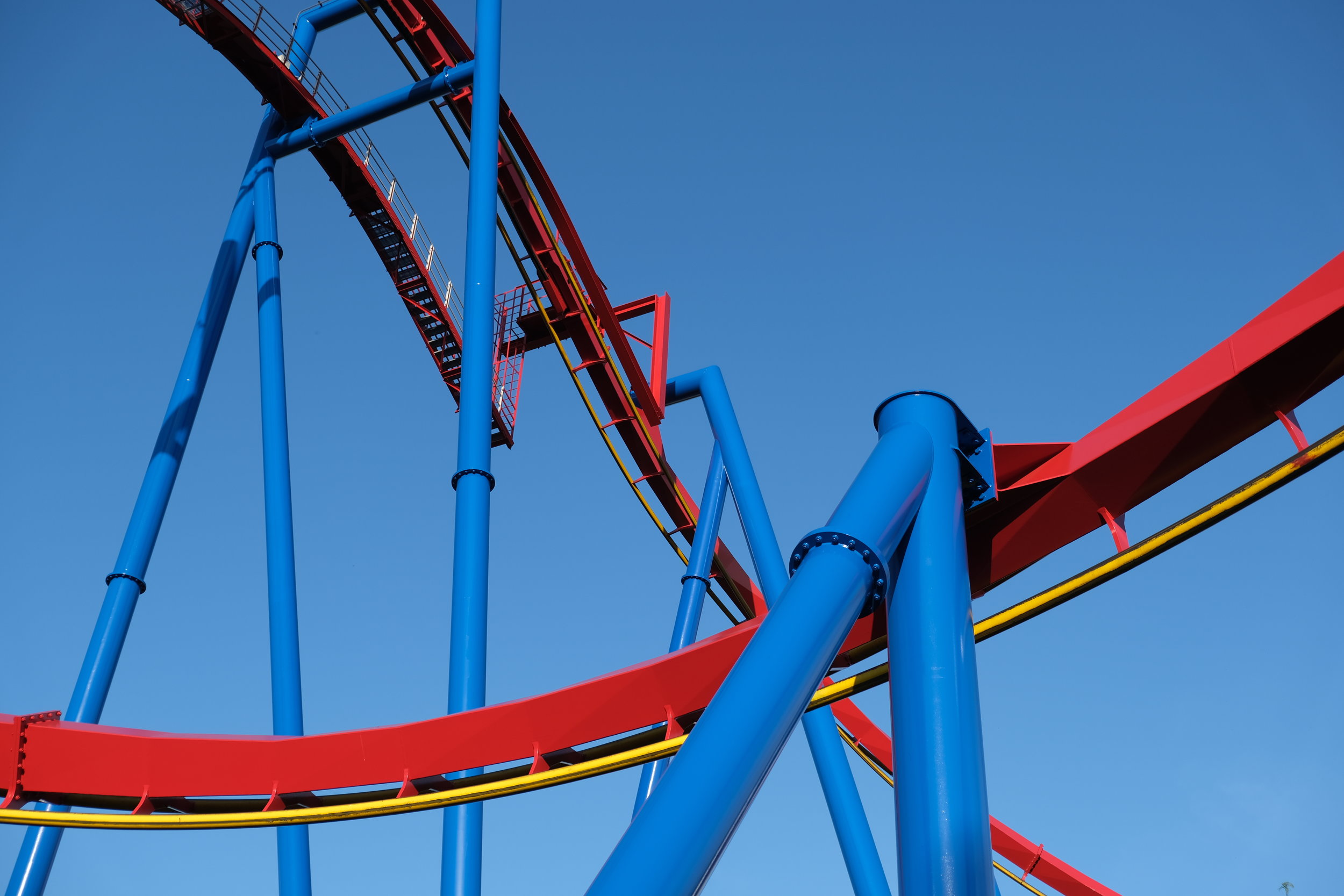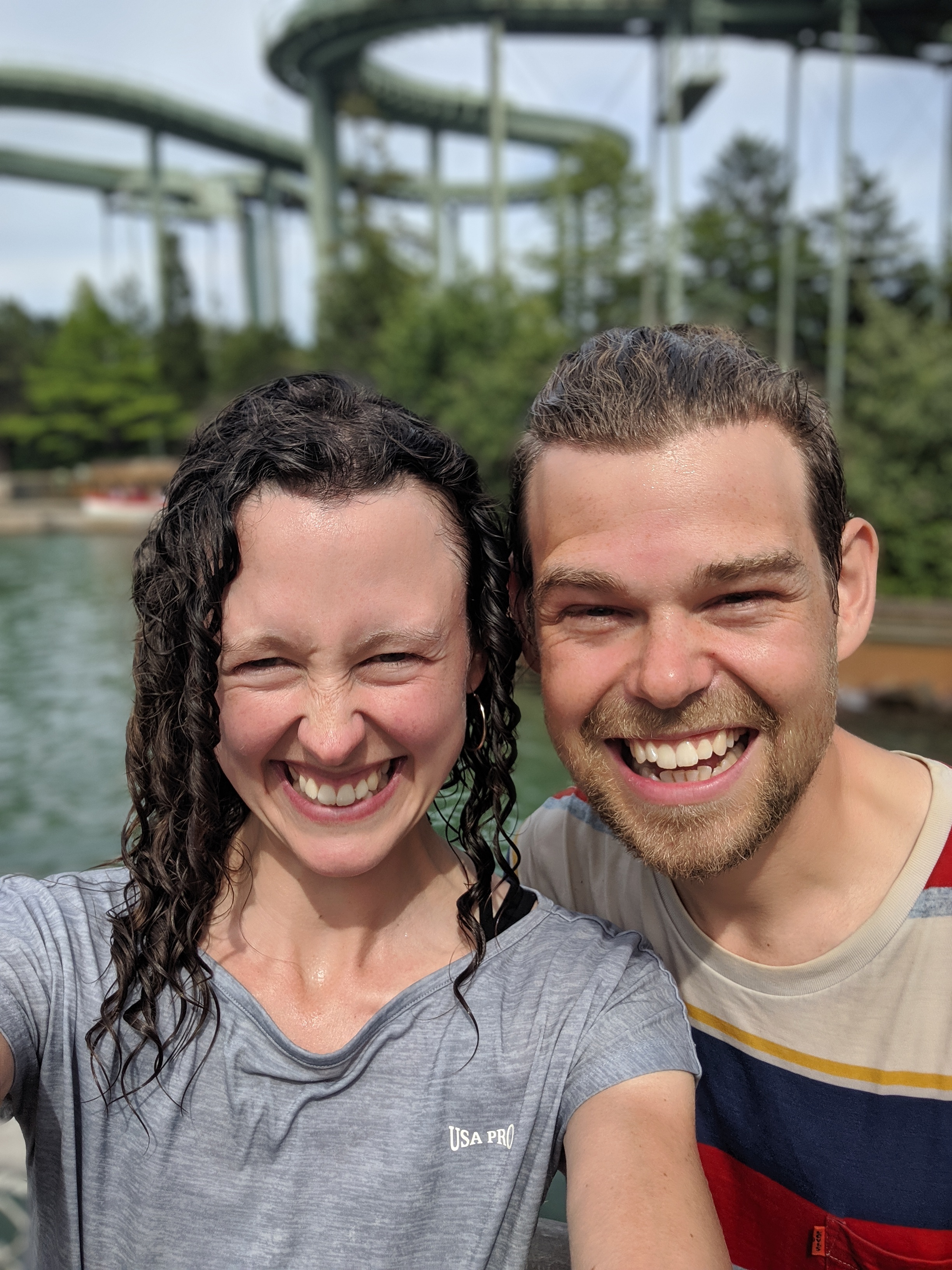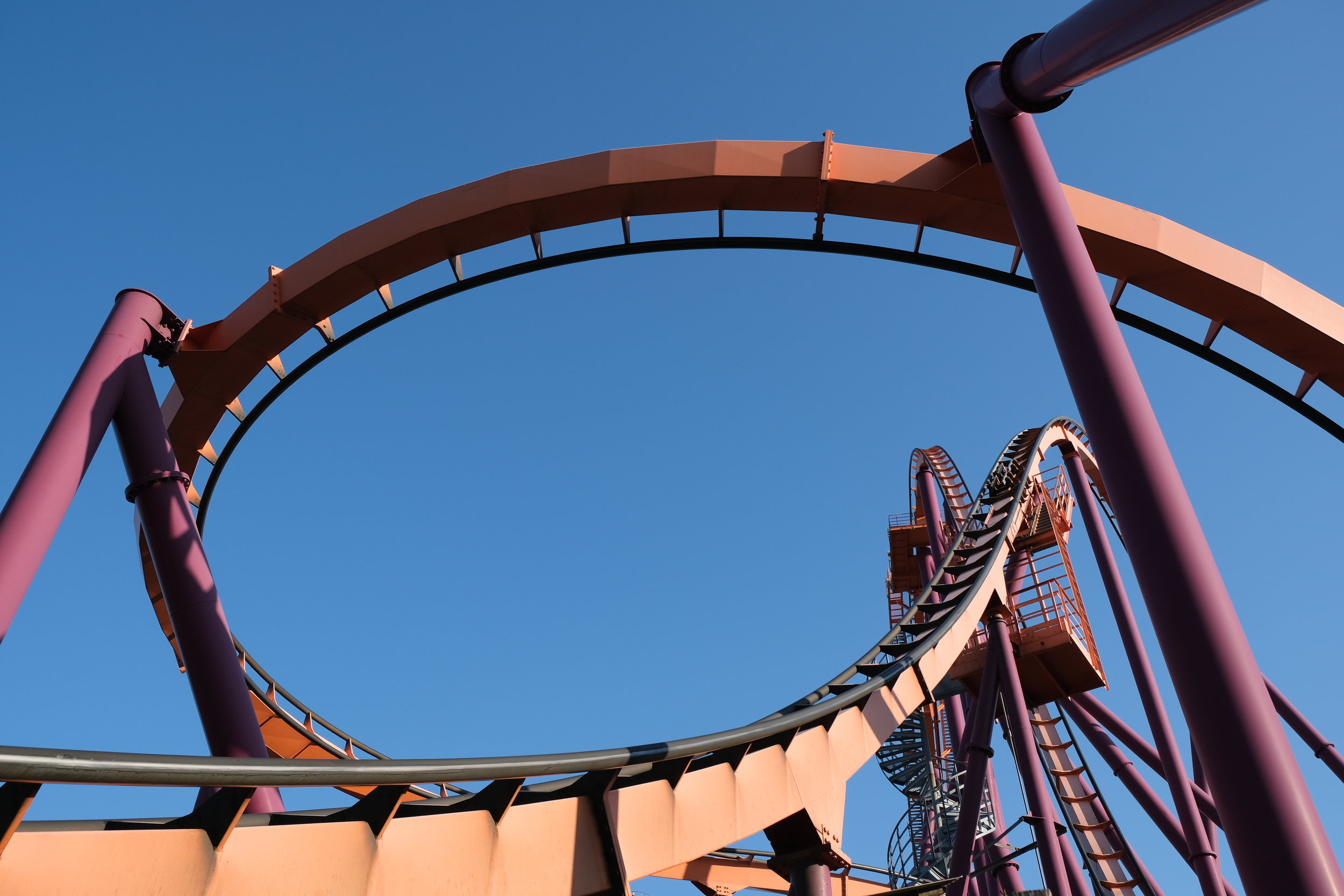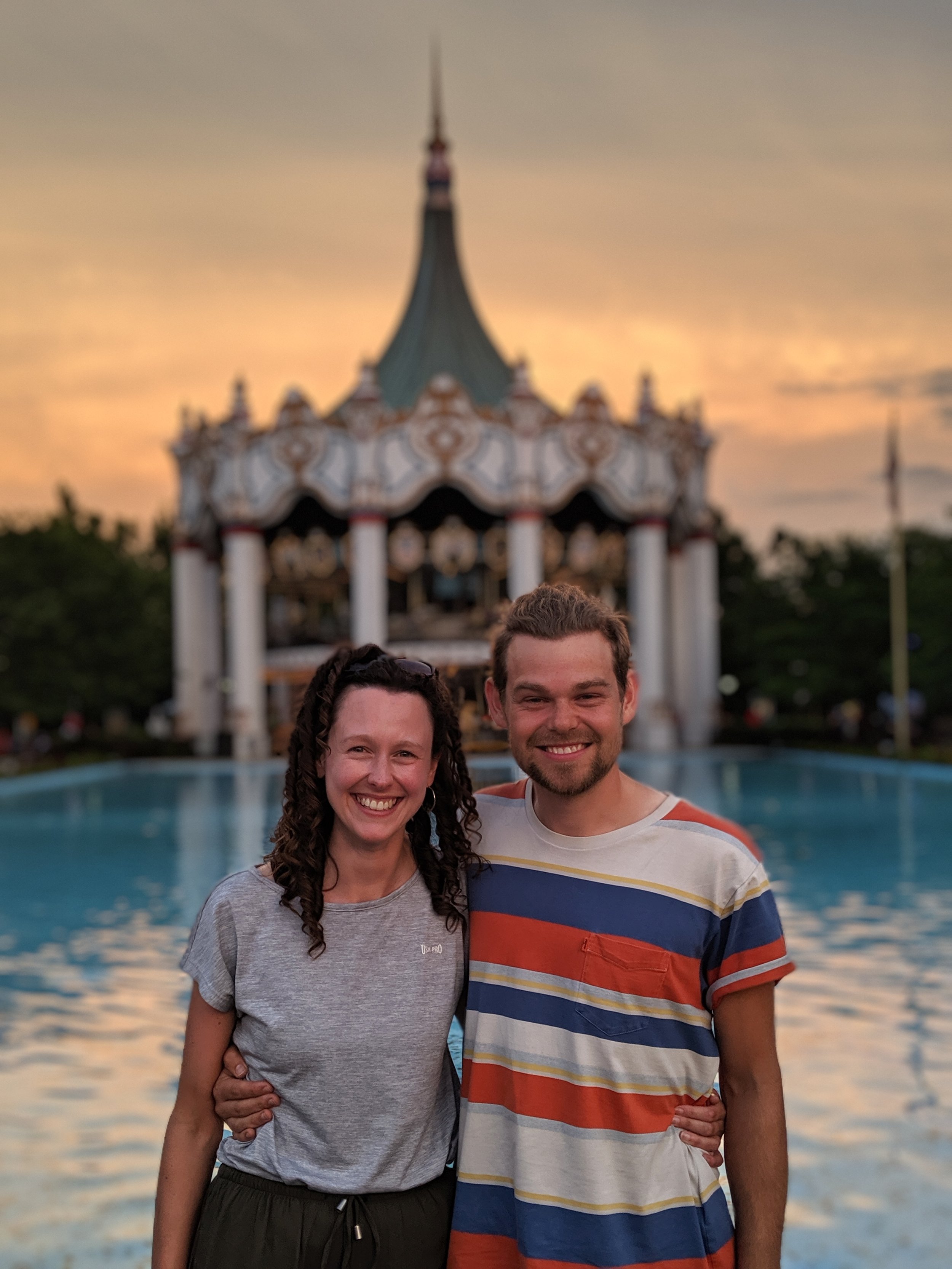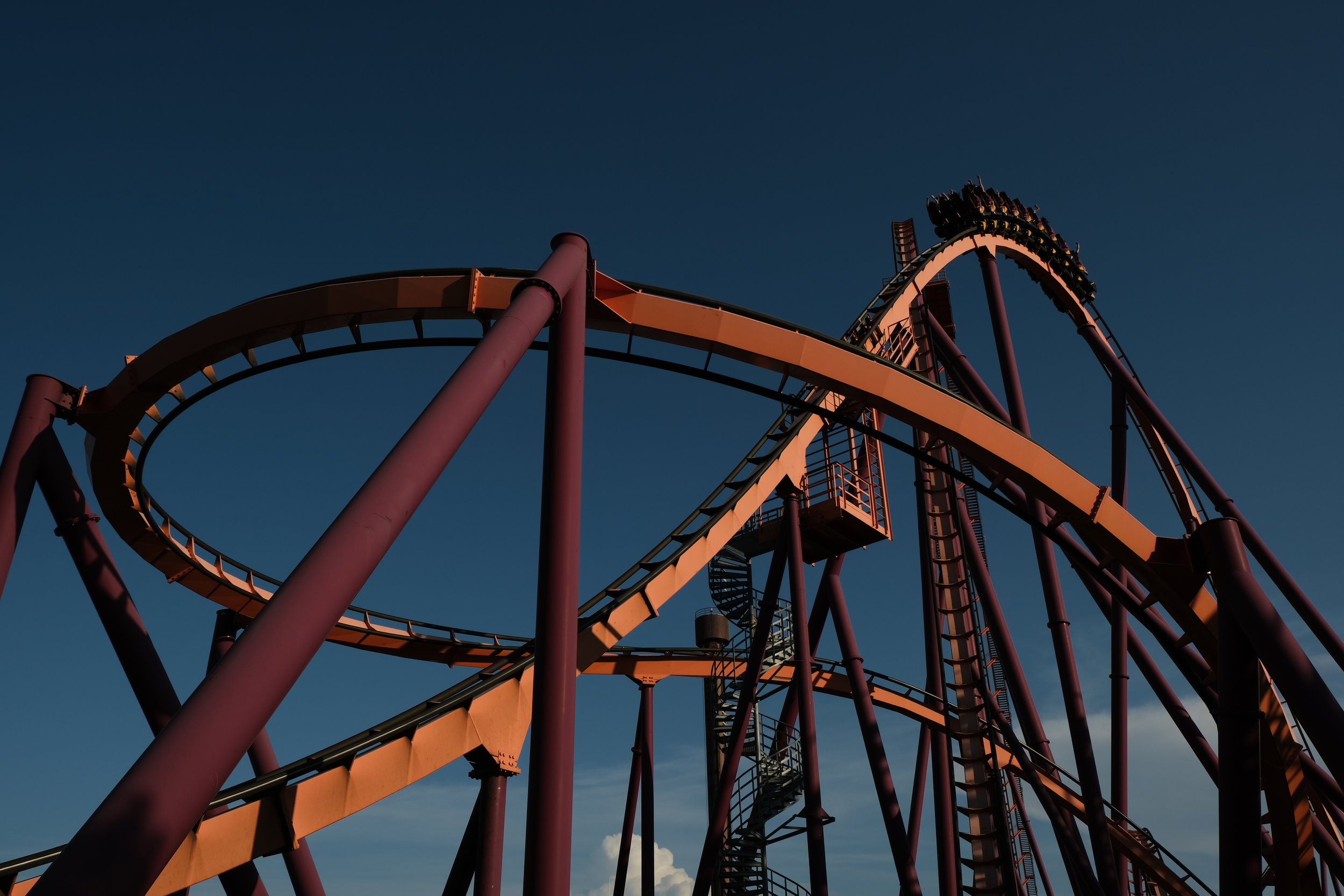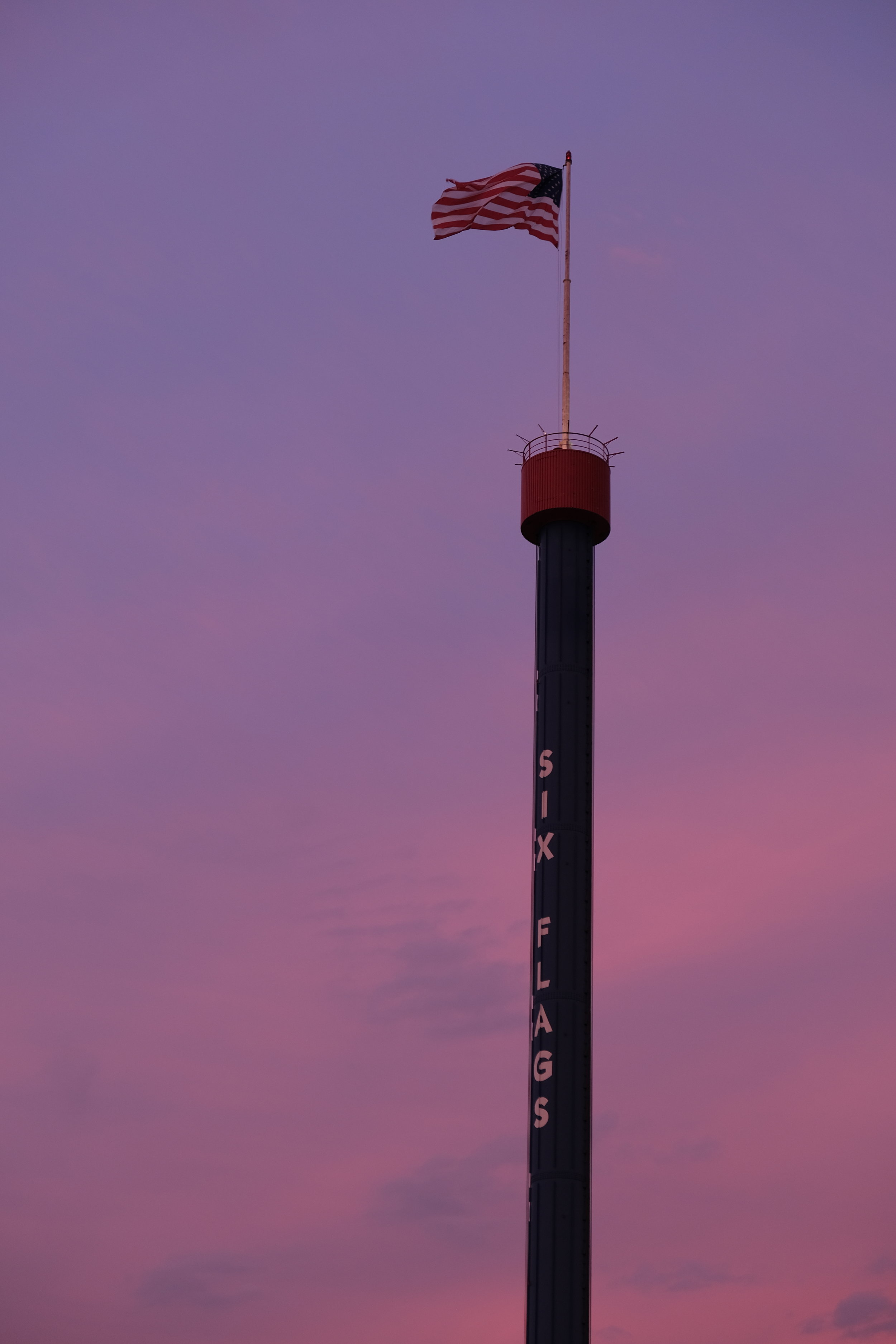6 Things We Learned on the Chicago to New York City Bicycle Route (USA Day 31)
We’re in Chicago! It’s wonderful! It hasn’t rained all day! I’m not sure anybody wants to read about our lovely time at Six Flags Great America, including our top five favourite rollercoasters in descending order (Superman, X-Flight, Raging Bull, Goliath, American Eagle) or our decadent funnel cake sundae, so instead I’m doing something a little different.
For the cyclists and cycle tourers reading (Hi there!) here are some things we learned on Adventure Cycling Association’s Chicago to New York Bicycle Route, or CNYC as it’s referred to on their website. Some of them you may already know, many you won’t be told on the ACA website, all of them you might find useful. So read on and make sure to ask any questions in the comments below. We’d love to help you plan your own trip on this incredible route, and want to make it as easy as possible to do so.
1. Ride from East to West
Obviously we didn’t do both directions but we heartily recommend going in reverse, from New York to Chicago. If you’re flying in from another country, New York is not only an inspiring place to arrive, but also an excellent one to get your gear together, say “wow” a lot and prepare for the ride. We bought our bikes from Sid’s Bike Shop on 151 West 19th Street in Manhattan, then had an excellent tune-up at Redbeard Bikes on 69 Jay Street in Brooklyn.
The view, setting off from New York
Riding out from this metropolis into wilder and wilder spaces is the reason we’ve chosen to cross the entire country from East to West, despite the headwind hell we’ve signed ourselves up for just down the road. The appeal of going west into the unknown, just like the pioneers did hundreds of years ago, just like the lads did in The Grapes of Wrath, just like the Pet Shop Boys told us to do, feels just more fun. Arriving in Chicago by the lakefront trail is phenomenally exciting, and the city itself provides a more-than-fitting reward for the hard miles. In our three days here we’re planning to visit Six Flags, go to a Cubs game, catch some comedy, dip into a deep dish and climb the Willis (FKA Sears) tower.
2. Take The Optional Routes
We took the Philadelphia Alternate, and think you should too. The Great Allegheny Passage (GAP) and the Chesapeake and Ohio Canal Trail (C&O) are muddily brilliant experiences, really unmissable, plus you start off your journey with much less climbing, which is nice. You get a bit of the Jersey Shore too on your first day, so keep your eyes peeled for Snooki. With this decision, plus taking the Indianapolis option, we got to see two extra major cities which, for tourists like us, was a treat, plus historical locations such as Valley Forge and Gettysburg. Also, passing through major urban areas gives you a better chance of finding WarmShowers hosts. More on that later.
3. Your Mileage May Vary
Adventure Cycling says you’ll get from New York to Chicago in 1,172.9 Miles. With regular diversions for local food, good places to stay, missed turnings and quieter roads, we did it in 1,262 Miles, a full ninety more. We’re not ones to take the most direct route: we’re going to California via Montana, for goodness’ sake, but even if you’re in a hurry, plan for a few extra and enjoy the diversions.
Just because you’re following a nicely-planned route, it doesn’t mean you can’t plan your own options day-by-day. In New Jersey there are some horrible main roads that you can easily avoid by looking a little ahead and allowing a few extra miles. We use Strava’s Route Planner to guide us along popular cycling roads, and it generally works well. Obviously, navigating on your phone gobbles battery, so bring a rechargeable power bank.
4. Plan For Off-Road
How much mud could a mudblood mud if a mudblood could blood mud?
As well as the trails I mentioned earlier, which are some of the most beautiful miles you’ll cover on this route, you’ll catch the Panhandle Trail in West Virginia, the Ohio to Erie Trail in Ohio (who’d’a guessed?) and plenty of smaller ones in Indiana including the Monon Trail and the Nickel Plate Trail. The surfaces vary greatly: mainly paved further west, but very bumpy and gravelly on the C&O particularly. On wet days you’ll get muddy, even with mudguards or fenders, and there’s always the risk of punctures if you run a thinner tyre. Our Surly Disc Truckers have 41mm tyres, by far the fattest I’ve ever ridden for long periods, and I thought I’d hate it. In fact, the stability and confidence they provide are a godsend when you’re miles from the nearest town and you just can’t handle another puncture. In the 1,262 miles we’ve covered so far, we’ve had one puncture (shard of glass just outside of Xenia, Ohio) and outside of this have felt the need to re-inflate our tyres a grand total of zero times. That’s low.
5. There’s Plenty of Sleeping Options
If you haven’t signed up for warmshowers.org and plan to ride this trail, do so immediately and make a profile. We’ve met countless amazing people through this site, and stayed in the most incredible places. Of course there are hotels in most towns, but you won’t get the same experience or meet nearly so many genuinely lovely humans, and really, isn’t that why we’re here? The East and Midwest of America have more WarmShowers hosts than most, so we’ve tried to use this great resource while we can.
The best alarm clock
Regularly, though, you won’t find hosts to stay with, so bring lightweight camping gear and plan ahead of time where you’ll lay your hat. We had great success calling churches or fire stations in a planned destination and asking kindly to pitch our tent in their parking lot. Obviously we got more ‘no’s than ‘yes’es, but it’s better than pitching in secret or paying for an RV park. On the above note, try to get hold of a free-standing tent so that you can pitch on tarmac or gravel as well as earth. Give yourself as many options as possible.
A side, camping-adjacent, note: if you’re riding this trail on its own, you won’t need cooking equipment. Bring it along if you like, but when we camped we ate raw, fresh fruit and veg plus calorie-high bits and pieces from discount goods stores like Family Dollar or Dollar General, then enjoyed lunchtime drive-thrus and home-cooked meals in some WarmShowers places, and felt well-fed and happy throughout. The other advantage of not cooking is the lighter weight of your packs, and carrying no leftovers which makes camping at night safer and simpler.
6. The Four Seasons
If you’re not from the USA (us) and don’t know much about summer in the Midwest (also us), expect baking sun during the day and thunderstorms in the evening. Tornados and floods have occurred in the last month (June 2019) and they’re due again soon. Download an app like Accuweather to give you clear warnings if a storm is approaching because you do not want to get caught in them.
As I said above, if you’re planning a tour and want to ask any questions, do so in the comment section below or in the ‘Contact’ page of my website. Otherwise find me on Instagram or Twitter, @ivanbrett.
